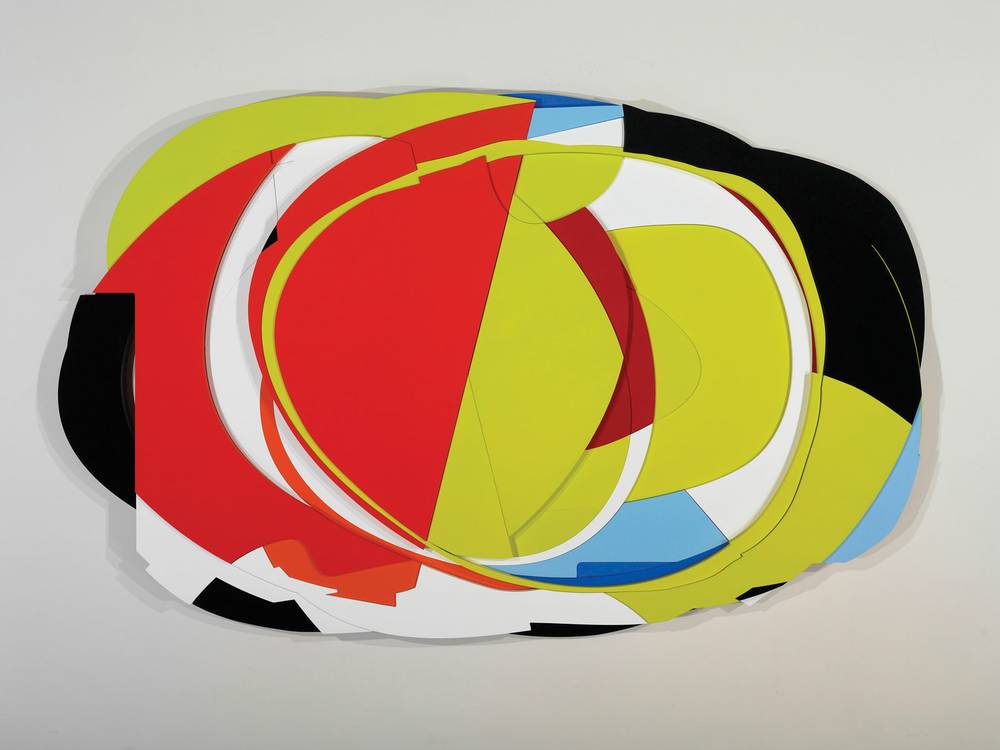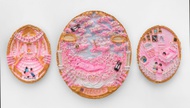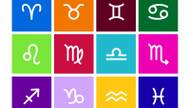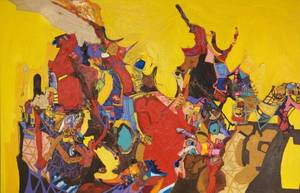
Art for Art’s Sake: Selections From the Frederick R. Weisman Art Foundation Through April 26; Monday-Friday, 9 a.m.-5 p.m. (Thursday until 8 p.m.); Saturday, noon-5 p.m.; suggested donation $2-$5. Barrick Museum, 895-3381.
The Art for Art’s Sake show at UNLV’s Barrick Museum attaches an electrode cap to the skull. It’s a stimulating wake-up call to the senses, a consciousness-expanding razzle-dazzle, a mind-body excursion into the happy zone. The 43 paintings, sculptures and drawings hotdog between the fine wood floors and the partitioned ceilings, performing winsome visual stunts and curious optical contortions. Viewers harboring doubt about the effect of color on psychology should hang out a while in the show, preferably wearing a Fitbit. Art for Art’s Sake could even kick up your metabolism.
The visual blitzkrieg is launched by color—the brighter and more saturated, the better. Brian Porray’s pulsing psychedelic mandala delivers a vivid Rubik’s Cube jolt; Tim Bavington’s xylophonic painting vibrates with warm synesthetic harmonies; and Holton Rower’s marbled jawbreaker melts into a shiny and seductive tie-dye cross. Other artists, like Yek and Joe Macca, veer into the universal mysticism of Color Field’s overlapping, transformative planes, while painters like Iva Gueorguieva opt for dense, brushy surfaces associated with the emotional arabesques of Abstract Expressionism.
Color—a lot of it—suits a city with neon icons. But the simpatico relationship of the LA-based Frederick R. Weisman Art Foundation with UNLV goes deeper. The Foundation brought Las Vegas art back to Las Vegas, with works by several emerging artists linked to UNLV (Porray and Jason Adkins), and artists associated with cultural critic David Hickey. The exhibition has a homecoming quality, with paintings by Hickey students Bavington, Yek, Thomas Burke and David Ryan. In fact, Hickey’s notion of beauty as desire seems more a hallmark of the show than its “art for art’s sake” slogan. The “art for art’s sake” folk divorce art from context, hard to do when the works primarily function as sensual, experiential objects.
Among the standouts is Ryan’s 58-by-93-inch “LHC,” a relief “painting” sliced, cut and layered together from Corafoam and vinyl paint. “LHC” stands for “Large Hadron Collider,” the largest particle accelerator in the world tasked with searching for the “God particle”—an infinitesimally small mechanism that supposedly creates mass. With swirling trajectories of color transitioning among contrasting planes, Ryan’s “LHC” alludes to the explosive moment of creation, when bits of matter poof in and out of existence. But who needs to privilege concept when the physical experience of standing in front of the thing—rods and cones riveted—triggers an endorphin buzz?
Some art in the exhibition takes a quieter, more intriguing tack—Stephanie Patton’s curiously voluptuous off-white sculpture, for example—but none of it is boring. Art for Art’s Sake coherently revisits the venerable link between color and emotion, but since all but two pieces are recent, maybe it’s color and cognition, and their relationship to beauty, that’s at stake here.







